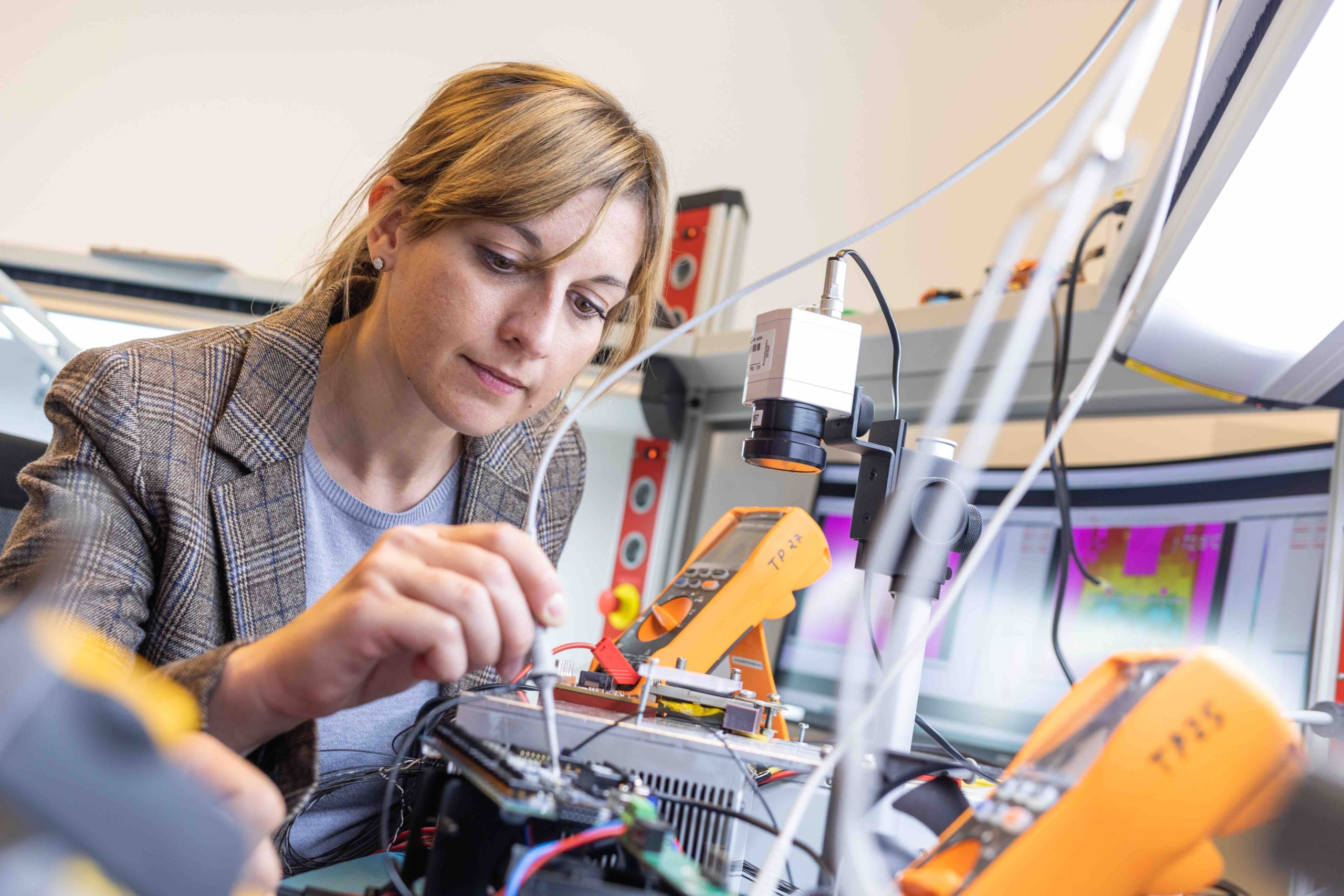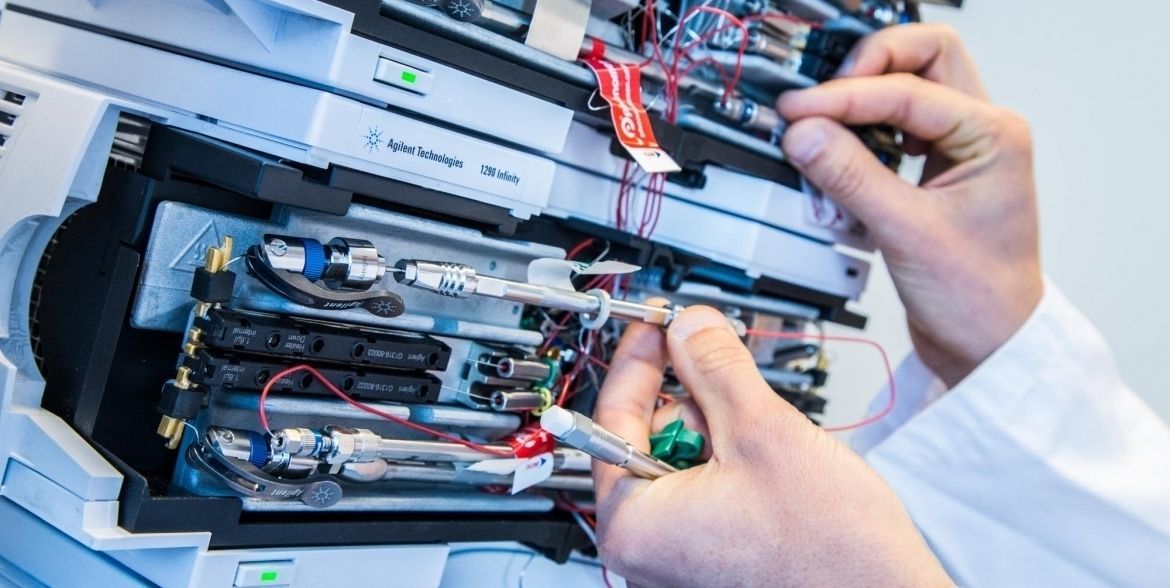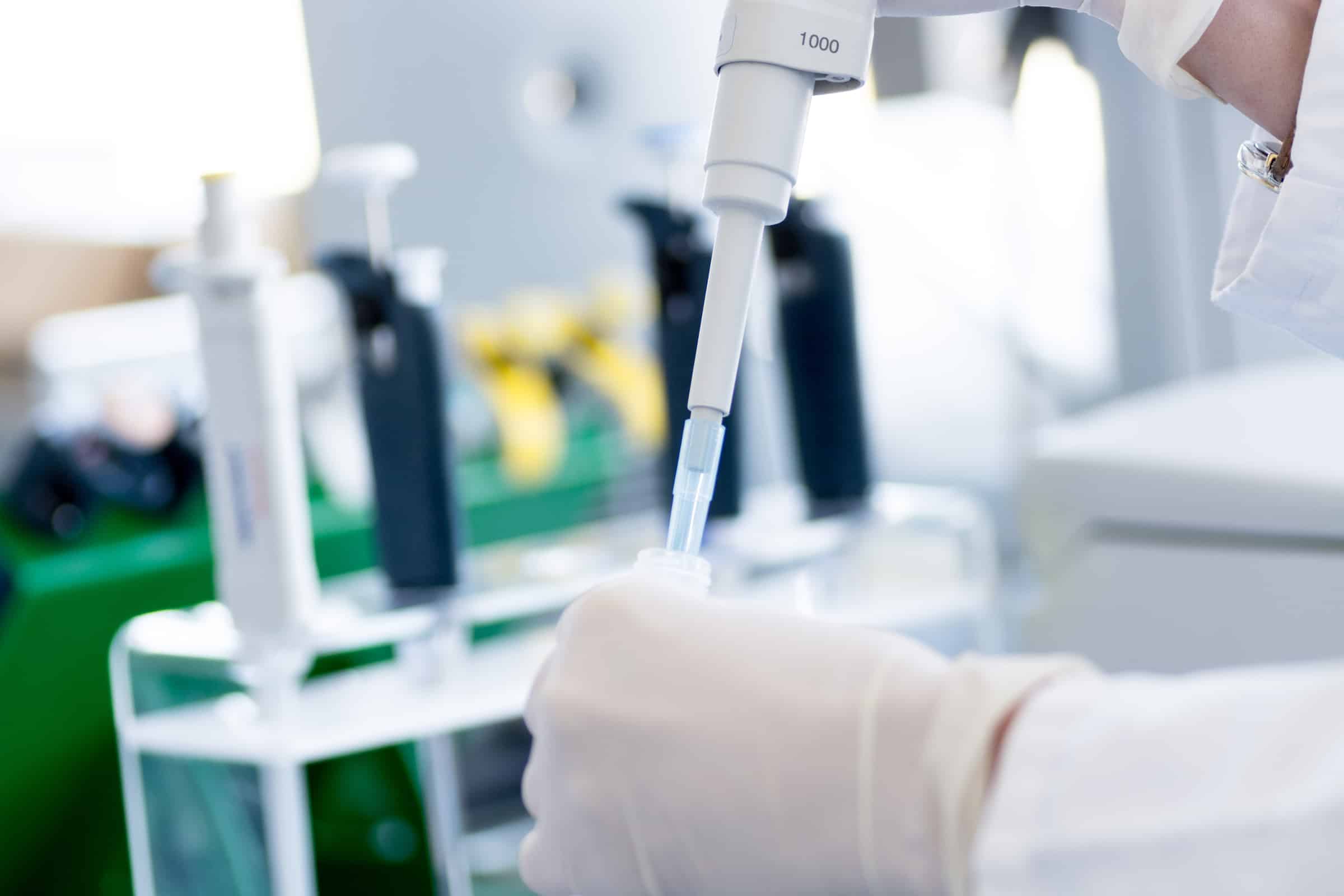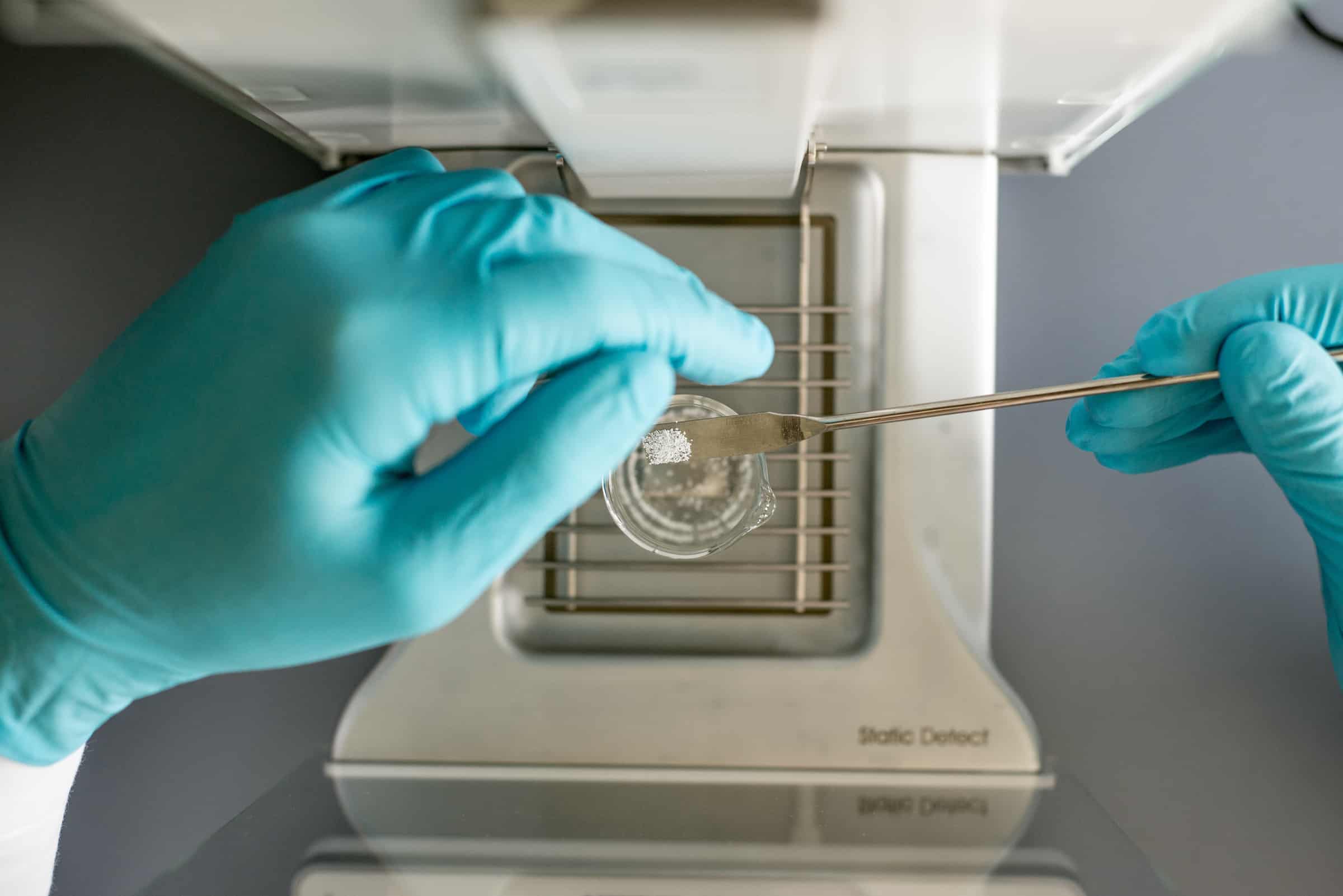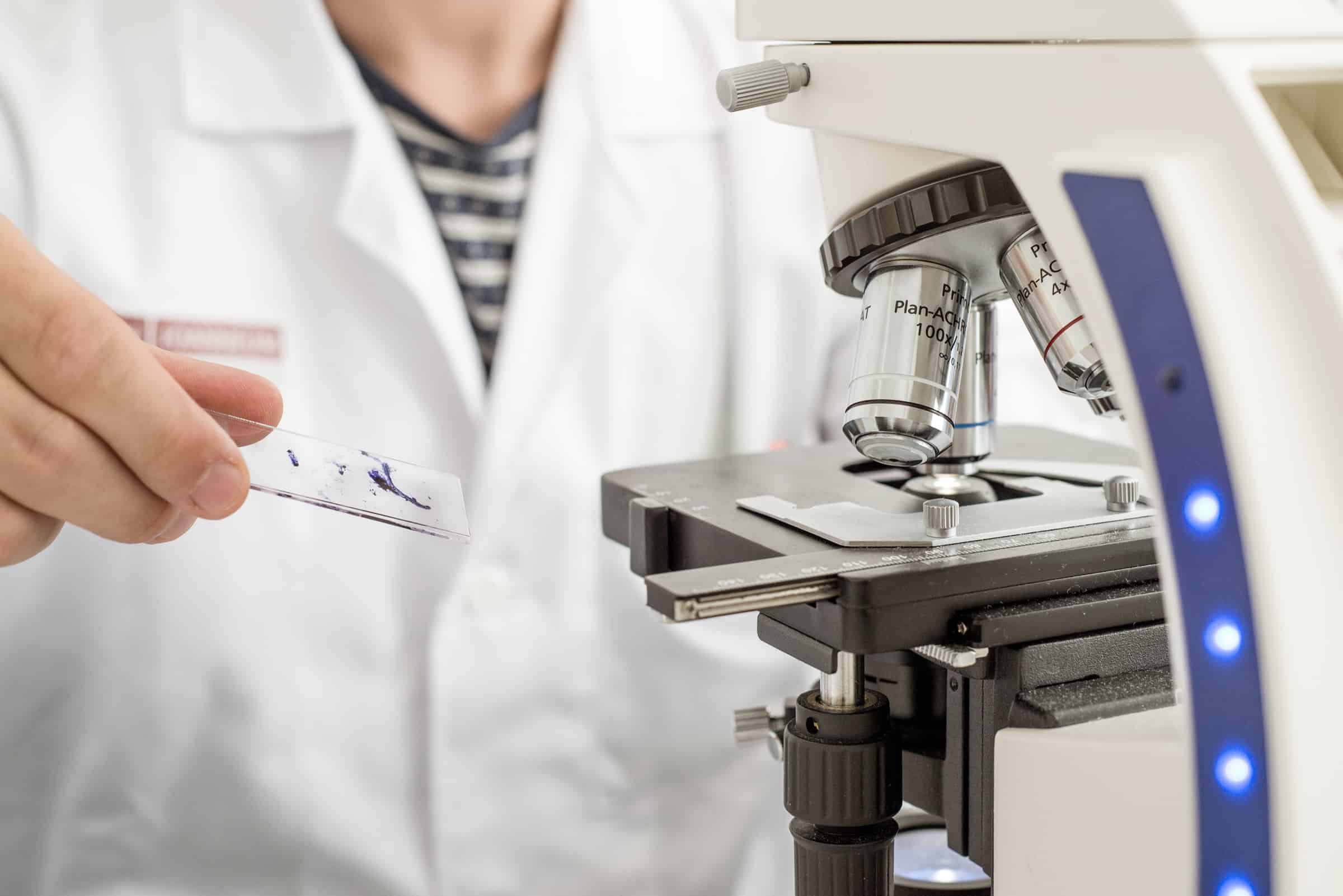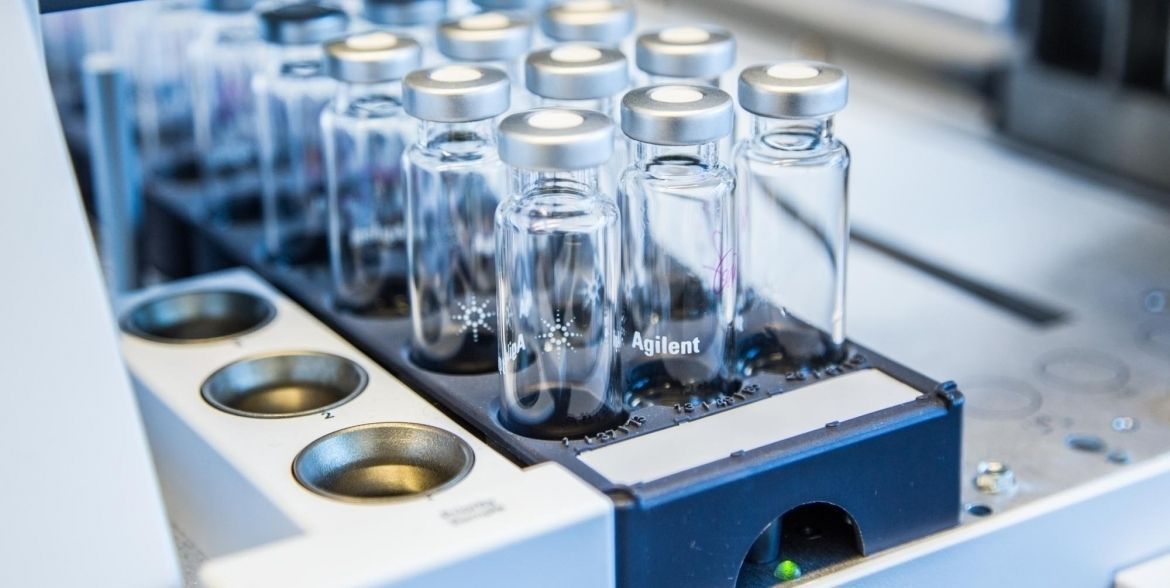The ChromSpec Lab can rely on state-of-the-art infrastructure for carrying out research assignments and collaborations with industry and academia as part of projects and degree theses.
The key research areas include the optimisation and development of analytical methods with detection limits in the low ppb range in complex matrices and the processing and statistical analysis of measurement data. Chromatographic separation techniques are applied to quantify volatile, semi-volatile and non-volatile compounds in complex samples. The focus is on the identification, characterisation and quantification of by-products in the production of pharmaceuticals and of migrating packaging components and the characterisation of polymers.
The laboratory is equipped to handle analytical tasks in the following research areas:
- In-process purity testing and identification of impurities
- Migrating packaging components: extractables and leachables
- Method development for biomarker identification





